Two Things Before We Dive In
1. I want to remind you that I am off for October. However, I’ve brought in some excellent and very well-qualified individuals to fill in while I am gone. Today’s edition of Tropical Topicsis all about potential houseplant/tropical varieties, and an “old but goody” variety for your reconsideration.
2. Bossman Chris Beytes put together an informative synopsis of how Hurricane Ian impacted Florida in this week’s Acres Online. Haven’t read it yet? Check it out HERE.
Okay, now on with the guest contributors!
A New Peperomia for Collectors
These next three are from Dr. Richard Criley, Emeritus Professor of Horticulture at University of Hawaii, whose research embraced the physiology of tropical ornamentals flowers, foliage plant production, growth regulators, production of ornamental Hawaiian native plants and alternative trees for Hawaii landscapes.
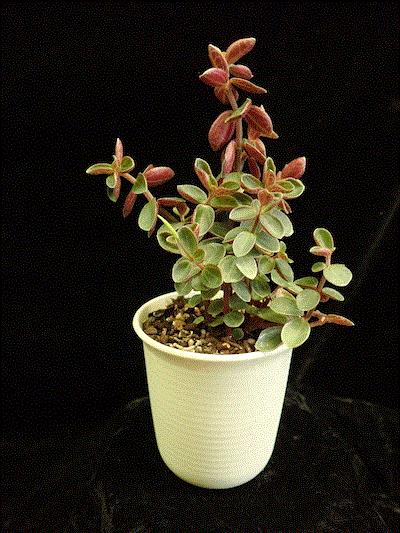
A 3-in., 8-month-old Peperomia sandwicensis Palikea
Hawaii has many unique species in its natural areas but only a few have made their way into local landscapes and even fewer into houseplant status. Peperomia sandwicensis Palikea is one of those that has proven it can adapt to interior conditions in research conducted by Dr. Orville Baldos in the Department of Tropical Plant & Soil Sciences at the University of Hawaii. It typically grows up to 30-cm. tall and is found growing on top of moss-covered rocks, in soil or as an epiphyte in wet to mesic valleys to wet forests.
This selection from the island of Oahu was evaluated for ease of propagation (easy from leaf or stem cuttings), growth rate (slow) and salability attributes (dark green leaves with reddish underside and reddish stems). The light level tolerated was described as office light conditions. The plant in the photo is about 8 months from planting the rooted cutting.

Dwarf Tradescantia spathodea Sports
It’s amazing that we take for granted our landscape plants in Hawaii when our Mainland friends see a new houseplant. Those cute little Ficus lyrata houseplants become 60-ft. giants when given their space outside.
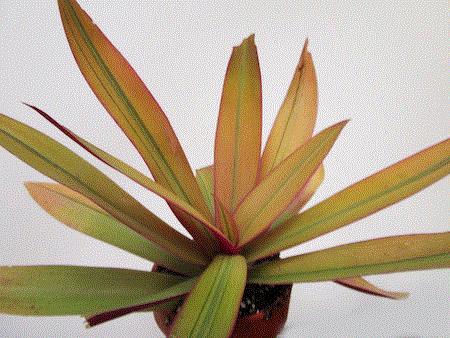
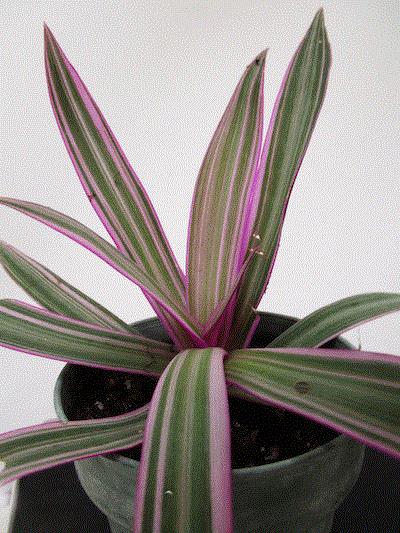
The dwarf Tradescantia spathodea is normally a dull green and burgundy as a groundcover, but someone discovered sports with stripes and gold coloration. The Tradescantias have become popular because of their ease of culture, and sports have been found in other species. Massed in the landscape, these new forms are eye-catching and merit evaluation as potted plants where they are less susceptible to the pests that chew upon them. A few foliage plant growers have seized the opportunity to introduce these new plants.
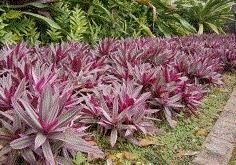
Pink-striped Tradescantia spathodea as a border planting.
Euphorbia leucocephala
How about a poinsettia cousin that is both timeable (photoperiodically sensitive), responsive to PGRs and fragrant? Native to Mexico, Euphorbia leucocephala can be grown from seed or cuttings. In the landscape it forms a rounded shrub about 5- to 6-ft tall. Imagine this in a multi-plant composition with our traditional poinsettia or maybe as an alternative potted plant for Easter!
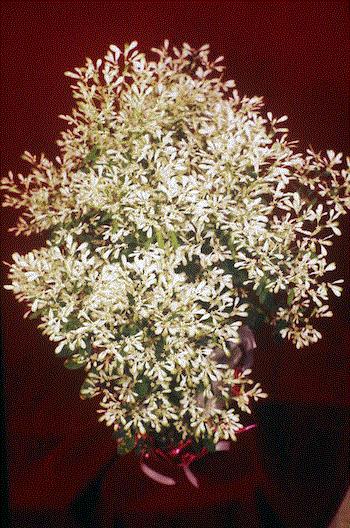
Interestingly, as the tiny bracts age, they become pink before falling off. Here’s calling on our plant breeders to develop more strongly colored selections with a tighter plant habit.
Have a question or comment for Richard? Drop him a note at criley@hawaii.edu.
An Old Favorite With Renewed Interest
This item comes from Barbara L. Collins, author of “Professional Interior Plantscaping,” someone who has her finger on the pulse of what plants are trending with plant parents.
Aeschynanthus radicans sounds like it may be an insect or a disease—not a great turn-on for customers. But call it a lipstick plant and customers will smile. (They might even smile wider if they know that the Greek word, auschune, means shame and refers to a male body part.)
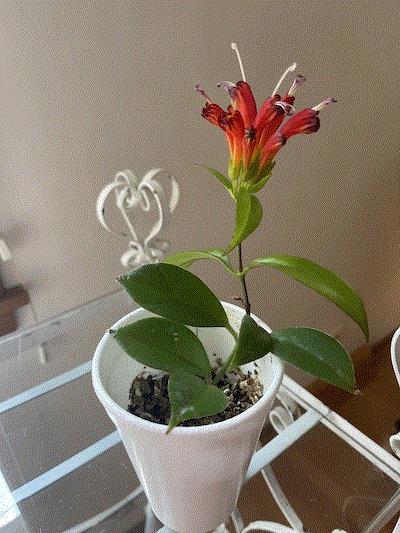
So named the Lipstick Plant, it bears terminal clusters of tubular, 3-in. long flowers: a true reddest-red lipstick color. Each flower looks like it is emerging from a purple lipstick case, which is the calyx (a collection of usually green sepals that surround the actual flower).
The oval and pointed, waxy dark-green foliage is neatly arranged in opposite pairs along tough and wiry stems creating a trailing effect.
I chose this tropical plant because:
-
It is quick to root from cuttings and quick to flower at an early age. A friend gave me a small cutting in late spring and it grew to 6 inches and then bloomed in early fall.
-
The flowers are long-lasting.
-
It is easy to maintain with bright, indirect light and well-drained soil.
What a great alternate crop for the holidays including Valentine’s and Mother’s Day. What a great year-round crop with its gracefully arched stems that can be sold in a hanging basket. Four-inchers can be used for an underplanting of a containerized indoor tree.
This Gesneriad is related to the African Violet. Why not encourage it to become a new “old” favorite?
Have a question or comment for Barbara? Drop her a note at barbcollins.ms@gmail.com.
Comments, questions or news to share? Just drop me a line at ewells@ballpublishing.com.

Ellen Wells
Senior Editor
Green Profit
This edition of Tropical Topics was sent to 29,590 loyal readers!
If you're interested in advertising on Tropical Topics, contact Kim Brown ASAP!